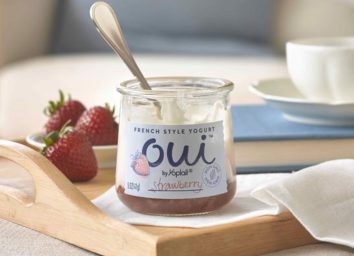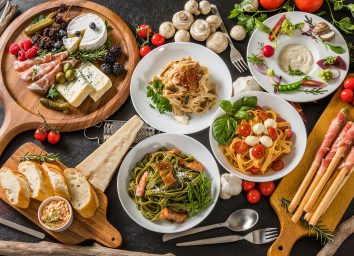The Worst Dish You Should Never Order at a French Restaurant

There’s nothing like sitting down to a fancy meal at a French bistro with a bowl of French onion soup, traditional steak frites, or an omelet with fresh herbs and greens with roasted potatoes. Simply bliss. Yet, while dining over French cuisine tastes delicious, some of those menu items can be high in carbs, sodium, and saturated fat.
Just consider the ingredients—cheese (which is in everything and anything, right?), bread (baguettes—who can stop with just one?), and delicious desserts that you simply cannot leave the restaurant without digging into. However, some orders are worse than others.
So to help you make the healthiest choice the next time you’re out enjoying a meal at a French restaurant, we uncovered the one dish you should just stay far away from.
The worst French dish you simply shouldn’t order is…
Quiche Lorraine

“Traditional quiche is usually made with lots of cheese, heavy cream, and a pastry crust, making it carb-, fat-, and calorie-dense,” says Charlotte Martin, MS, RDN, CSOWM, CPT. The portions of these ingredients make up the bulk of the dish, and they are in high amounts—there’s no getting around it.
“Quiche lorraine is often even more fat- and calorie-rich thanks to the addition of bacon,” she says. So, that’s just another added diet doozy that takes this dish over the top. “Quiche is best enjoyed in small portions and/or shared with someone else, and served with a side salad or side of veggies,” Martin says, but this isn’t often what you’d do when you order a plate for yourself.
Though quiche often masquerades as a healthy food, it’s made with a buttery piecrust, bacon, eggs, and heavy cream—at a restaurant, it’s not like a “lightened” quiche recipe you might find online. (If you are looking for some healthy meal inspiration, be sure to sign up for our newsletter to get daily recipes and food news in your inbox!)
“One piece can pack over 700 calories, 60 grams of fat, almost 1,400 milligrams of sodium and no fiber,” says Lauren Harris-Pincus, MS, RDN, and author of The Protein-Packed Breakfast Club.
That’s just in the one dish alone. You are likely enjoying that quiche with roasted potatoes or frites, a beverage, and perhaps a side or appetizer, too. The fat used is saturated, since it comes from cheese, bacon, and piecrust, rather than nuts, avocado, or fatty fish, which are made of heart-healthy, unsaturated fats, for example.
Plus, studies show that eating less saturated fat—and replacing with unsaturated—can decrease heart disease risk, cholesterol, and blood pressure. One review found that cutting down on saturated fat led to a 21% reduction in risk of cardiovascular disease, plus heart disease and stroke, as well as greater health perks when replacing saturated fats with unsaturated.
And sodium can also increase such risks, so eating more than 1,000 milligrams in just one dish is definitely not something you want to do often!
What should you eat at a French restaurant instead?
You can’t go wrong with a salad, which uses greens as the base and has fresh ingredients that offer protein, good fats, and fiber. Try a Nicoise salad, suggests Martin. “This salad is packed with filling and good-for-you nutrients, like grilled tuna steak, egg, and roasted potatoes, plus a variety of veggies like salad greens, green beans, and tomatoes,” she says.
The best move is to order dressing on the side, and then just use your fork to add a few forkfuls to wet the greens, dispersing throughout. This keeps calories, fat, sugar, and sodium lower. Plus, the greens are less soggy, too!
If you’re in the mood for something else, you can also go with seafood in a soup instead of a salad.
“My favorite choice in a French restaurant is bouillabaisse, a seafood stew made from lean fish and shellfish with a base of tomatoes, garlic, onions, fennel, saffron, and thyme,” says Harris-Pincus. For about 250 calories per cup, it’s rich in potassium and not too high in sodium, which can help to manage blood pressure, she explains. Plus, you’re getting those healthy fats in from the fish, as well as some antioxidants from the tomatoes and onions.
“Also, the dish counts towards the recommended seafood intake of 8-12 ounces per week,” she says, which can better for your ticker!
Don’t like soup? Just get a nice filet of salmon or another type of fish with a side of veggies and roasted potatoes for a bit of starch. Can never go wrong with that classic combo, either.








